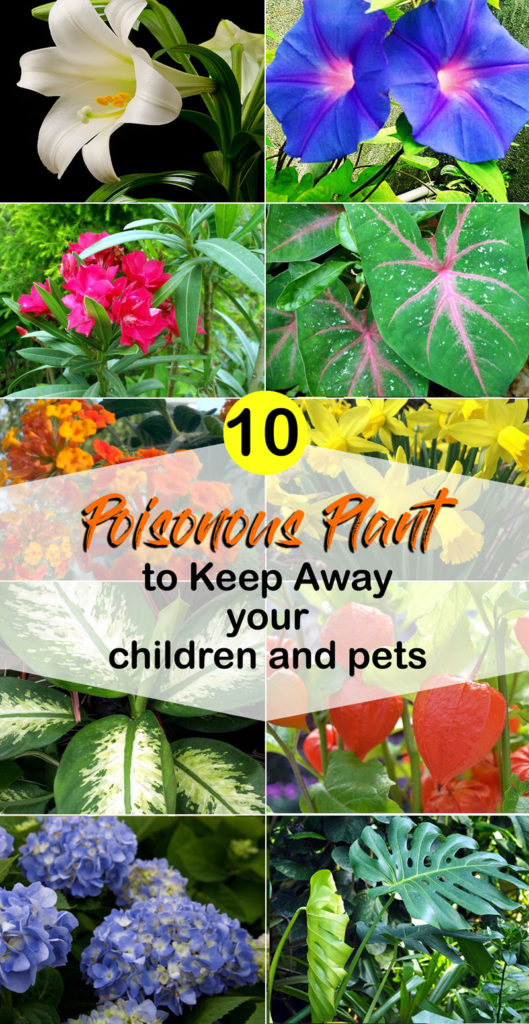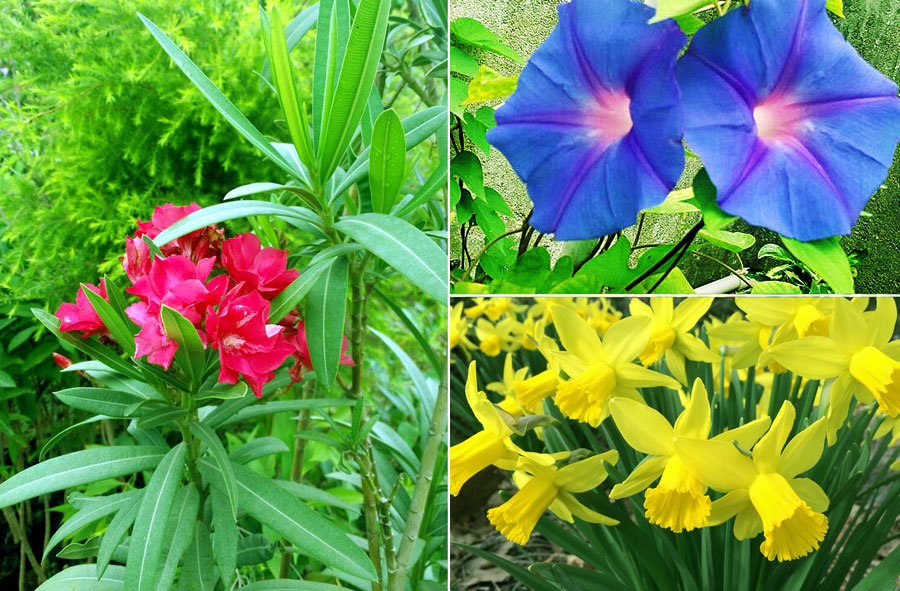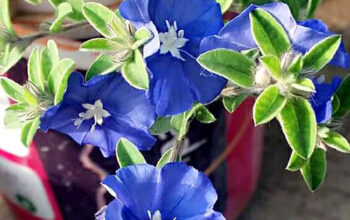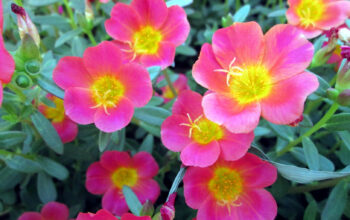Poisonous Plant
These Poisonous Plants are many popular blossoms and look very attractive to see, which contain toxic. These plants are Poisonous Plant, if pets and humans eat it, it can be fatal. know top most toxic plants Lantana Poisonous Plant, Easter lily, Caladium, Hydrangeas, Dieffenbachia most poisonous plant, Morning Glories, Philodendron, Daffodils, and Chinese Lanterns, Keep Away your children and pets.
There are some weeds in it, which are the reason for itching when it comes in contact with the body. You should always contact medical professionals for this.
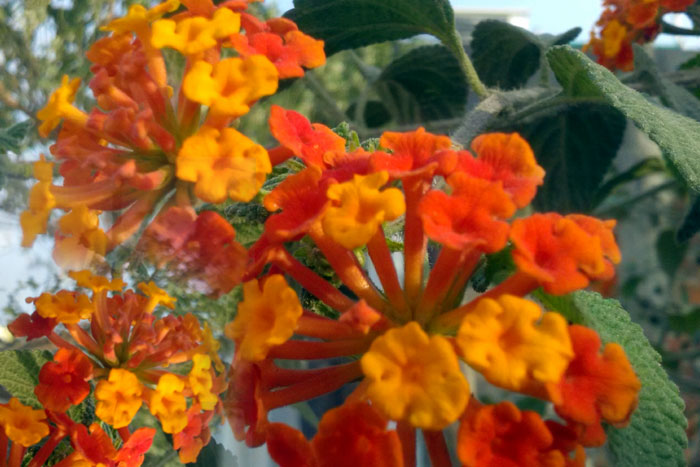
01. Lantana Poisonous Plant
Lantana has a lot of small flowers, most of Gardner’s annually grow in cool climates. In warmer climates, Gardner is familiar with its aggressive form of production. It is called Red Sage, Wild Sage, Yellow Sage, and Shrub Verbena. Lantana is a poisonous plant, Triterpenoids (liver toxins) are found in all parts. Depression, vomiting, diarrhea, weakness and possible liver failure may also occur when swallowing. Read more.
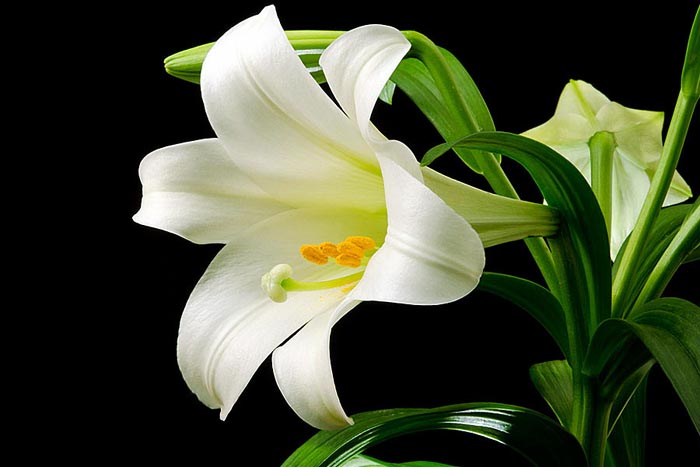
02. Easter lily
It is commonly known by names like Easter Lily, White Trumpet Lily etc. Its flowers of Pink, Red, White color spread their beauty in the spring. Usually, Easter lilies are used to decorate the rooms in the form of cut flowers. When the blossom of Easter lily closes, cut off its faded flowers and let it remain in a container or garden, it will bloom for many years. This is extremely poisonous plants for cats. One or two leaves or pollen on it is fatal, it can kill them, the kidneys may fail. Many plants of the Lilium and Hemerocallis are a poisonous plant.
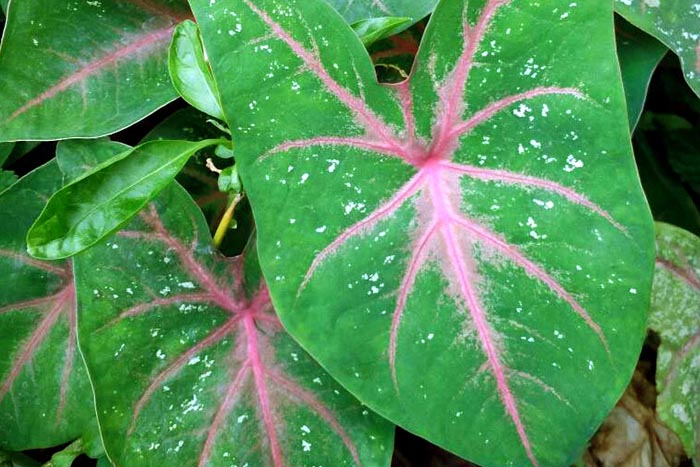
03. Caladium
They have excellent beauty in their leaves; hence it has a special place in the form of a houseplant. Its leaves are in large, thin and attractive patterns. These are tubular plants that grow its leaves from spring to autumn. These plants are highly needed for moisture; they are not cold tolerant at all. Caladium requires Rich, well-drained potting mix. You can easily divide its mature tubers and develop new plants. These are considered USDA hardiness zone 10, but many gardeners develop them in an annual.
But these are toxic plants, the ingestion of the plant pain and irritation to the lips, tongue, which can be difficult to talk and swallow. More saliva and vomiting can also be a problem. Read .
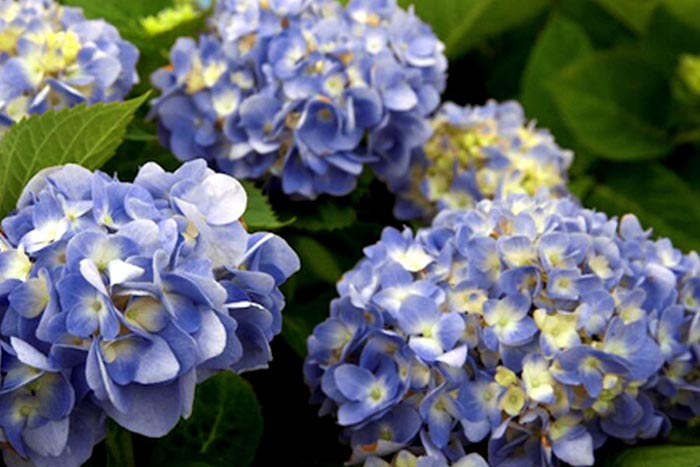
04. Hydrangeas
Hydrangeas are a genus of 70–75 species of flowering plants native to southern and eastern Asia and the Americas. By far the greatest species diversity is in eastern Asia, notably China, Japan, and Korea. There are many types of hydrangeas. Most Hydrangeas like full sunlight and can be planted by some particle. They can be grown in a wide range of soils. Hydrangea does not like too much warmer environment. It Hydrangea is a perennial shrub that blooms in both spring and summer season. And thus it is quite long considering your garden beautiful. But these are poisonous plant and it contains are the toxins. If pets and humans take enough of its flowers, it is fatal. Read growing condition.
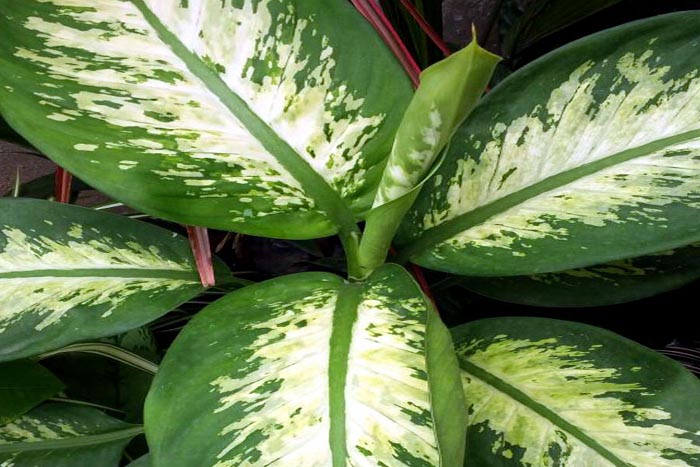
05. Dieffenbachia most poisonous plant
Dieffenbachia is a popular houseplant used to decorate your home and Office. It is easy to care and easily planted in the low light indoor plant. Its length can be up to 5 feet. Dieffenbachia plant well built up 65-70 degrees temperature. Temperatures below 60 degrees like the dump cane plant. It’s not like full sun. It is also known as a dumb cane. This a poisonous plant, if one swallows these popular plants, it can be lethal, which can close the airway. And if brushing against it can cause burning or itching. Read.
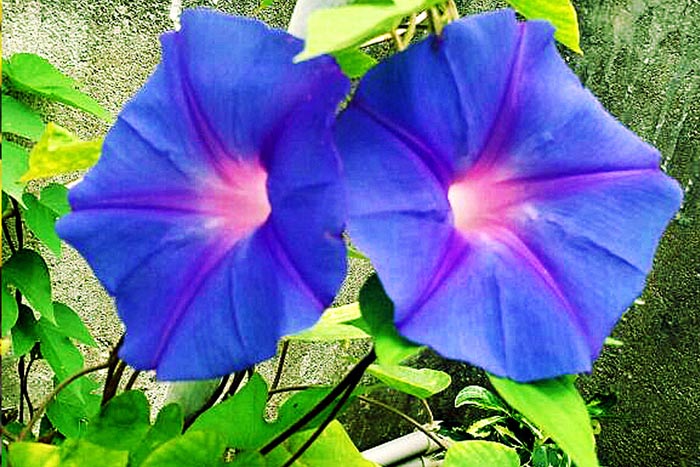
06. Morning Glories
These are annual flowering vines, which grow very fast. These are the same sweet Potato ’s botanical family, but they do not produce tubers. Morning Glorious is the annual climber, its stems are thin, its flowers The flowers of Morning Glorious are shaped like a trumpet, which blooms in red, blue, pink, white and magenta colors. In warmer areas, people put it in arch or pergola, or to cover the ground. Its flowers slightly fragrance, butterflies, and hummingbirds are attracted to these flowers. These creepers are sticking to the trees. Its heart-shaped leaves are bright green. Its some species are a poisonous plant, not all, yet it can be fatal if its seeds are swallowed in large quantities. Some of its species contain the toxin, lysergic alkaloids. Read more.
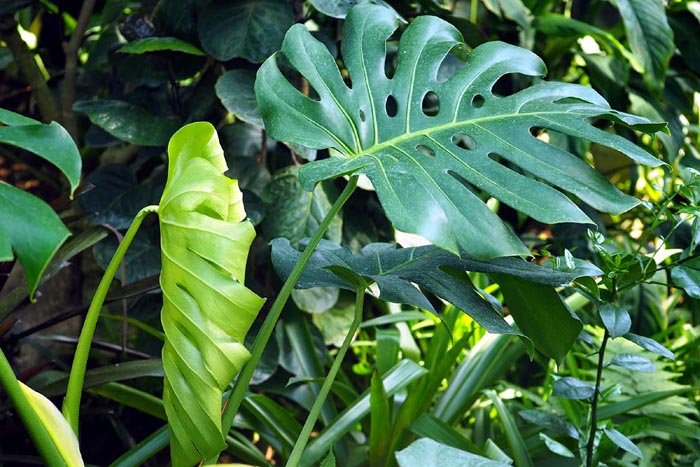
07. Philodendron
Philodendron is a member of the Araceae family, its nearly 400 species are known. As a tropical, it is quite a popular houseplant. This is especially effective in purifying air, establish it in many places in the home for health at home. This is especially known for its attractive leaves.
Philodendron is also quite a popular houseplant like Dieffenbachia, but it is a toxic plant, if it is swallowed, then burning sensation in the mouth and tongue, affecting digestion, spasms, and even seizures can come.
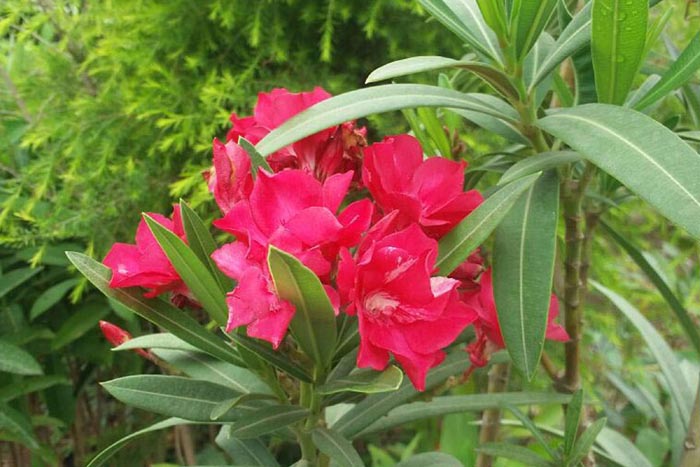
08. Oleander toxic plant
Oleander (Nerium oleander) is an evergreen shrub, in which showy, funnel-shaped flavors bloom, which can be grown very easily. These are Hardy of the US Department of Agriculture zone 8 to 10. Oleander is beautiful plants that bloom yellow, white, salmon and pink. But most people do not know it is a toxic plant and can be dangerous. It does not affect only children or young people but also harms to animals. Its leaves, flowers, and fruits are all dangerous. It causes irritation to touch the skin. Eating it can lead to gastrointestinal issues, such as nausea (vomiting), stomachache, bloody diarrhea, and heart problems. Read more .
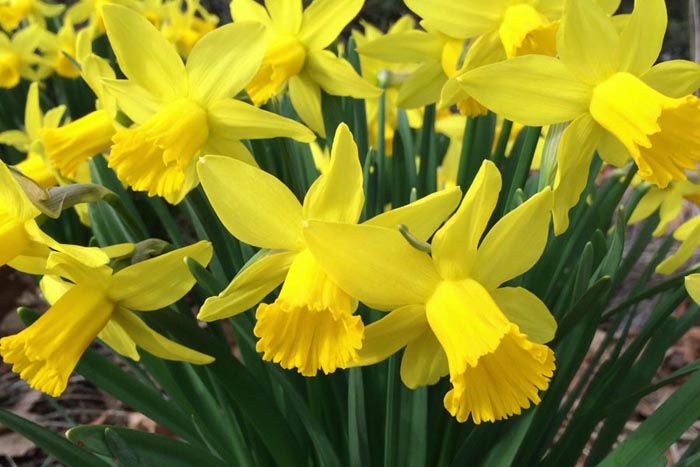
09. Daffodils
It is a hardy and easy growing perennial, which grows in most areas of North America, except Southern Florida. Bulbs of Daffodils are planted in the fall so that they can easily bloom in late winter and early spring. The flowers of Daffodils can be attractive, white or yellow, which is like a trumpet and has 6 petals. This is a poisonous plant, and the bulb is a most poisonous part. If you have a dog, then it can be more dangerous because they often dig. If it is Ingesting in a much amount then vomiting, diarrhea, convulsions, tremors and cardiac arrhythmia…read.
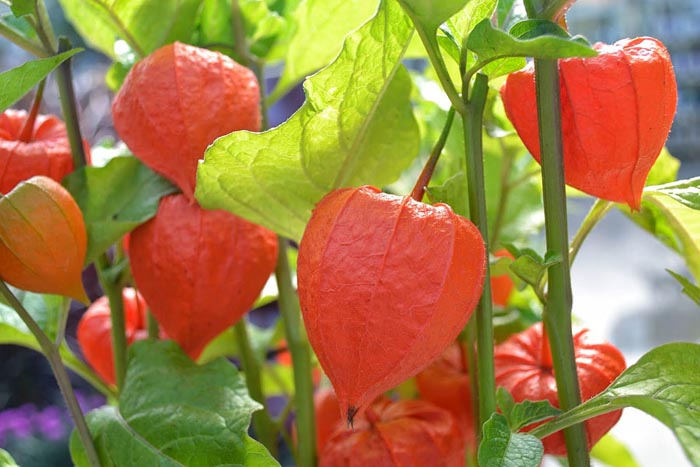
10. Chinese Lanterns
The Chinese Lantern Plant (Physalis alkekengi) is a hardy and perennial plant that is grown mostly in the UK. This plant gives light green fruits in August, which appears in September in a very attractive color deep orange. After three to four weeks these attractive fruits leave the plant, but if it is properly harvested, for several months their color and shape remain attractive.
But this is poisonous plant and can harm the children and the pet. The unripe fruits of the Chinese lantern plant are highly toxic, although mature fruits are edible. Swallowing it can lead to problems like a headache, stomachache, vomiting, diarrhea, breathing problems and numbness. Read more.
Treatment
01. Mouth
Remove any part of the plant or fruit, remove the small part of it in the container for identification. The person should wash his mouth with water if any part of the burn, swelling or discoloration should be checked.
02. Skin
Remove the contaminated clothes and wash the affected skin well with soap.
03. Eyes
Wash hands with soap and water to prevent burning the eye further.
Rinse the eye with lukewarm tap water for 10-15 minutes. Read.
For Pin:
